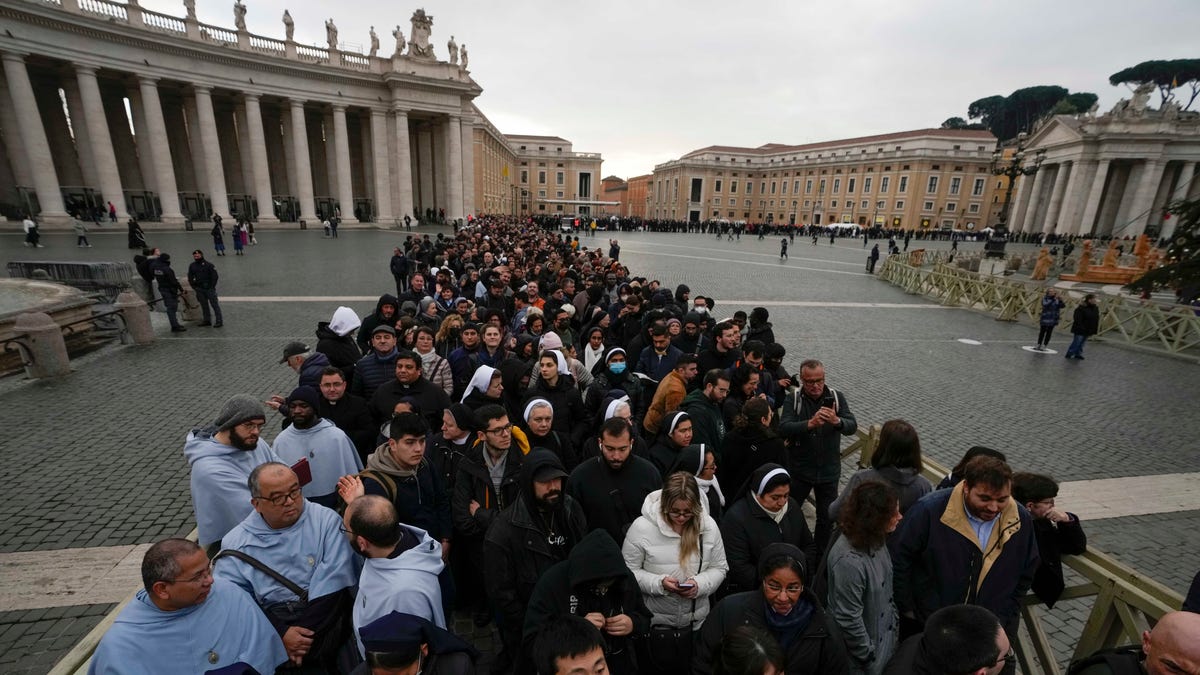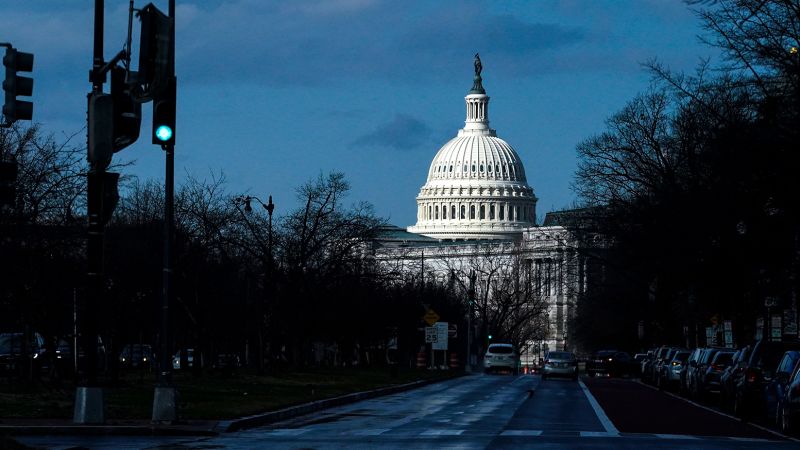CNN
—
Republicans’ take over of the House this week will usher in a two-year political era that threatens to bring governing showdowns and shutdowns as a GOP speaker and Democratic president try to wield power from opposite ends of Pennsylvania Avenue.
The unprecedented possibility that former President Donald Trump, who’s already launched another bid for the White House, could face indictment could tear the nation further apart at a moment when American democracy remains under grave strain. The already stirring 2024 presidential campaign, meanwhile, will stir more political toxins as both parties sense the White House and control of Congress are up for grabs after the closely fought midterms.
Abroad, the war in Ukraine brings the constant, alarming possibility of spillover into a NATO-Russia conflict and will test the willingness of American taxpayers to keep sending billions of dollars to sustain foreigners’ dreams of freedom. As he leads the West in this crisis, President Joe Biden faces ever more overt challenges from rising superpower China and alarming advances in the nuclear programs of Iran and North Korea.
If 2022 was a tumultuous and dangerous year, 2023 could be just as fraught.
Washington is bracing for a sharp shock. Since November, the big story has been about the red wave that didn’t arrive. But the reality of divided government will finally dawn this week. A House Republican majority, in which radical conservatives now have disproportionate influence, will take over one half of Capitol Hill. Republicans will fling investigations, obstruction and possible impeachments at the White House, designed to throttle Biden’s presidency and ruin his reelection hopes.
Ironically, voters who disdained Trump-style circus politics and election denialism will get more of it since the smaller-than-expected GOP majority means acolytes of the ex-president, like expected House Judiciary Chairman Jim Jordan of Ohio and Rep. Marjorie Taylor Greene of Georgia, will have significant sway. The new Republican-run House represents, in effect, a return to power of Trumpism in a powerful corner of Washington. If House GOP leader Kevin McCarthy wins his desperate struggle against his party’s hardliners to secure the speakership, he’ll be at constant risk of walking the plank after making multiple concessions to extreme right-wingers.
A weak speaker and a nihilistic pro-Trump faction in the wider GOP threaten to produce a series of spending showdowns with the White House – most dangerously over the need to raise the government’s borrowing authority by the middle of the year, which could throw the US into default if it’s not done.
As Democrats head into the minority under a new generation of leaders, government shutdowns are more likely than bipartisanship. The GOP is vowing to investigate the business ties of the president’s son, Hunter Biden, and the crisis at the southern border. The GOP could suffer, however, if voters think they overreached – a factor Biden will use as he eyes a second term.
In the Senate, Democrats are still celebrating the expansion of their tiny majority in the midterms. (After two years split at 50-50, the chamber is now 51-49 in their favor). Wasting no time in seeking to carve out a reputation among voters as a force for bipartisanship and effective governance, the president will travel to Kentucky this week. He’ll take part in an event also featuring Republicans, including Senate Minority Leader Mitch McConnell, to highlight the infrastructure package that passed with bipartisan support in 2021.
Attorney General Merrick Garland could shortly face one of the most fateful decisions in modern politics: whether to indict Trump over his attempt to steal the 2020 election and over his hoarding of classified documents.
A criminal prosecution of an ex-president and current presidential candidate by the administration that succeeded him would subject the country’s political and judicial institutions to more extreme strain than even Trump has yet managed. The ex-president has already claimed persecution over investigations he faces – and an early declaration of his 2024 campaign has given him the chance to frame them as politicized.
If Trump were indicted, the uproar could be so corrosive that it’s fair to ask whether such an action would be truly in the national interest – assuming special counsel Jack Smith assembles a case that would have a reasonable chance of success in court.
Yet if Trump did indeed break the law – and given the strength of the evidence of insurrection against him presented in the House January 6 committee’s criminal referrals – his case also creates an even more profound dilemma. A failure to prosecute him would set a precedent that puts ex-presidents above the law.
“If a president can incite an insurrection and not be held accountable, then really there’s no limit to what a president can do or can’t do,” outgoing Illinois GOP Rep. Adam Kinzinger, a member of the select committee, said on CNN’s “State of the Union” Sunday.
“If he’s not guilty of a crime, then I, frankly, fear for the future of his country because now every future president can say, ‘Hey, here’s the bar.’ And the bar is, do everything you can to stay in power.”
Like it or not, with his November announcement, Trump has pitched America into the next presidential campaign. But unusual doubts cloud his future after seven years dominating the Republican Party. His limp campaign launch, bleating over his 2020 election loss and the poor track record of his hand-picked election-denying candidates in the midterms have dented Trump’s aura.
Potential alternative figureheads for his populist, nationalist culture war politics, like Florida Gov. Ron DeSantis, are emerging who could test the ex-president’s bond with his adoring conservative base. Even as he fends off multiple investigations, Trump must urgently show he’s still the GOP top dog as more and more Republicans consider him a national liability.
Biden is edging closer to giving Americans a new piece of history – a reelection campaign from a president who is over 80. His success in staving off a Republican landslide in the midterms has quelled some anxiety among Democrats about a possible reelection run. And Biden’s strongest card is that he’s already beaten Trump once. Still, he wouldn’t be able to play that card if Trump fades and another potential GOP nominee emerges. DeSantis, for example, is roughly half the current president’s age.
As 2023 opens, a repeat White House duel between Trump and Biden – which polls show voters do not want – is the best bet. But shifting politics, the momentous events in the months to come and the vagaries of fate means there’s no guarantee this will be the case come the end of the year.
Russia’s invasion of Ukraine last year showed how outside, global events can redefine a presidency. Biden’s leadership of the West against Moscow’s unprovoked aggression will be an impressive centerpiece of his legacy. But Russian President Vladimir Putin shows every sign of fighting on for years. Ukraine says it won’t stop until all his forces are driven out. So Biden’s capacity to stop the war from spilling over into a disastrous Russia-NATO clash will be constantly tested.
And who knows how long US and European voters will stomach high energy prices and sending billions of taxpayer cash to arm Ukraine if Western economies dip into recession this year.
Biden has his hands full elsewhere. An alarming airborne near miss between a Chinese jet and US military jet over the South China Sea over the holiday hints at how tensions in the region, especially over Taiwan, could trigger another superpower standoff. Biden also faces burgeoning nuclear crises with Iran and North Korea, which, along with Russia’s nuclear saber rattling, suggests the beginning of a dangerous new era of global conflict and risk.
Rarely has an economy been so hard to judge. In 2022, 40-year-high inflation and tumbling stock markets coincided with historically low unemployment rates, which created an odd simultaneous sensation of economic anxiety and wellbeing. The key question for 2023 will be whether the Federal Reserve’s harsh interest rate medicine – designed to bring down the cost of living – can bring about a soft landing without triggering a recession that many analysts believe is on the way.
Washington spending showdowns and potential government shutdowns could also pose new threats to growth. The economy will be outside any political leader’s capacity to control, but its state at the end of the year will play a vital role in an election that will define America, domestically and globally after 2024.
















